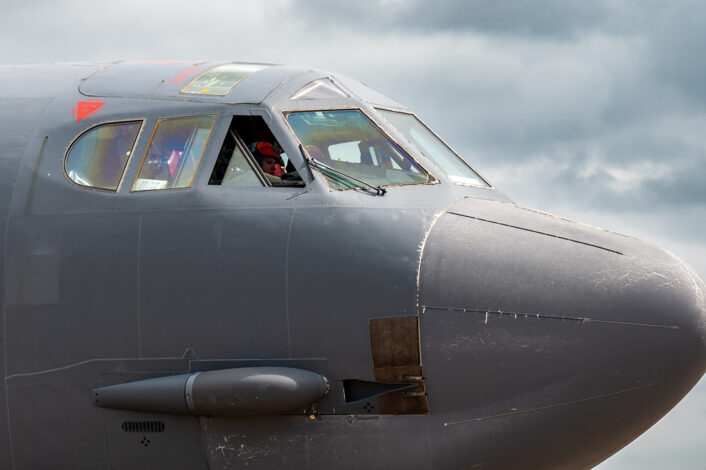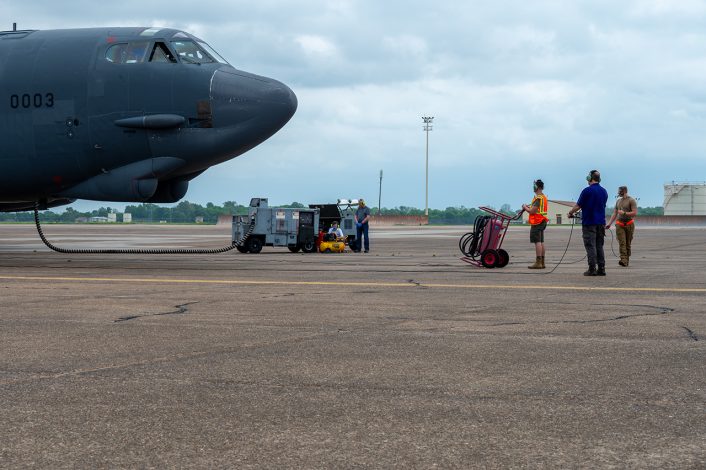Vapor purge testing provides critical information on how long it takes an aircraft operating in areas at risk of chemical attacks to purge hazardous chemical vapor and replace it with toxicologically safe, breathable air.
The Next Generation Aircrew Protection (NGAP) team recently completed rigorous vapor purge testing on the B-52H Stratofortress at Barksdale Air Force Base, Louisiana, on April 18, 2024.
This testing provides vital insights into the aircraft’s ability to clear hazardous chemical vapors and replace them with safe, breathable air, crucial for protecting aircrew during chemical events.
Prior to testing on the B-52H similar evaluations were conducted on various aircraft including the A-10 Thunderbolt II, F-15 Eagle, F-16 Fighting Falcon, F-22 Raptor, B-1B Lancer and C-130J Super Hercules.
The NGAP team is paving the way for future CBRN (Chemical Biological Radiological and Nuclear) protective gear while supporting current aircrews with valuable testing data. By analyzing purge times and vapor concentrations during flight, they determine optimal times for aircrew to safely remove protective gear post-attack, enhancing mission endurance and operational flexibility.
The concept is simple: testing allows to determine at what time during the flight, aircrews can safely remove CBRN equipment during flight, allowing the Air Force to employ its bombers in areas at risk of chemical attacks with reduced mission risk.

During testing, the NGAP team injects a chemical vapor simulant into the aircraft before takeoff, monitoring concentrations throughout the flight. After landing, sensors track the remaining simulant inside the aircraft, accounting for absorption into cabin materials.
“When the aircraft lands, the sensors that were running during the flight are replaced with new sensors to capture the concentration of chemical vapor simulant still present after engine shutoff,” explained Dr. Angela Theys, NGAP lead test method developer in a public release. “This is because the simulant inside the aircraft also soaks into the materials in the cabin.”
This process of replacing sensors ensures accurate measurement as the trapped vapors begin to re-emerge from the cabin materials into the air.
The NGAP team’s comprehensive efforts are essential for advancing aircrew protection, with data from these tests contributing to reports in the Defense Technical Information Center.
Following the successful B-52 testing, the NGAP team will continue testing on a dozen more types of aircraft.










